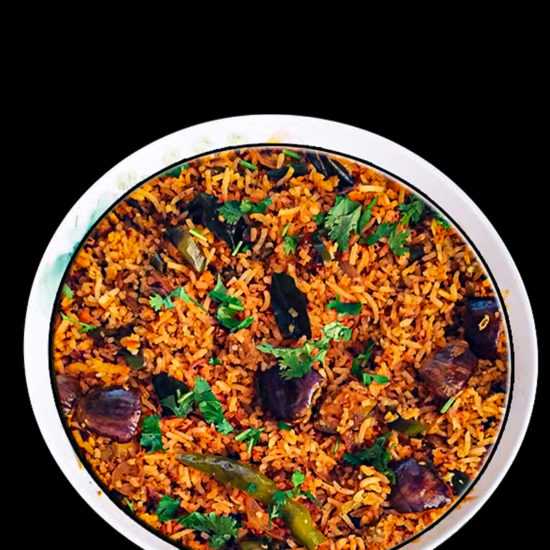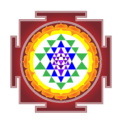Cuisine- General Karnataka
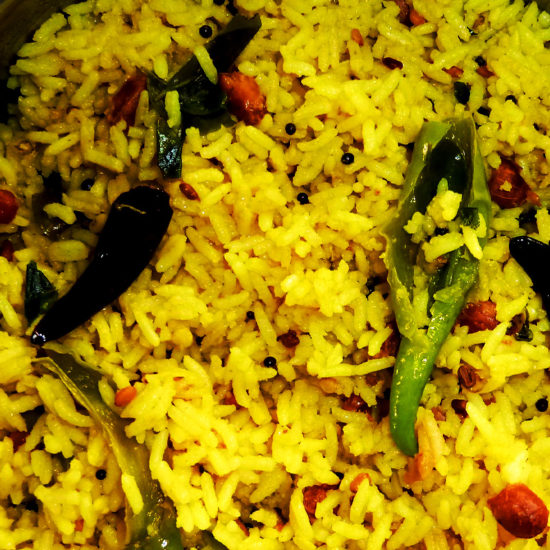
Chitranna (Lemon Rice)
Chitranna (Lemon Rice) is a popular rice based dish in Karnataka. Chitranna is easy to make and widely available at reasonable prices. It is a great option if you’d like to cook something at a shorter time for lunch or dinner.
How is Chitranna made:
Chitranna is made from cooked rice. Main ingredients such as coconut oil, lemon extract, ground nuts, onion, mustard and green/red chilli are fried on a pan for a few minutes. The pre-cooked rice is added and thoroughly mixed to ensure consistent distribution of ingredients. Coriander leaves are tossed on top as garnish. Few cashew nut pieces are also added for a premium feel.
Most households in Karnataka make Chitranna out of leftover rice from the previous day. This helps both avoid wastage of food and make a tasty dish for family members. Chitranna is very cost effective to make hence sold at low prices in all eateries, making it very popular with those looking for affordable food.
Served with: Chitranna is best had without any side dishes. Coconut chutney is an ideal companion. Chitranna is best consumed immediately after preparation.
Also try: Vangi Bath, Tomato Rice, Bisi Bele Bath, Puliyogare are other popular rice based dishes to try in Karnataka.
Where to get Chitranna:
Chitranna is easily available in darshinis (self service eateries) and various budget restaurants across Karnataka state. Most premium restaurants do not list Chitranna but may be able to prepare and serve it on request.
Filter Coffee
Karnataka is a large exporter of coffee beans. Coffee is known to be grown in Chikkamagalur and Kodagu districts, thus treating you all the way through your travel. Coffee is a major beverage for Kannadigas (local people of Karnataka). Filter coffee is the most popular variant of coffee.
Preparation of Filter Coffee:
Decoction: Coffee powder specifically made for filter coffee is first brewed in a special purpose container. This container has a top portion with perforated base and a bottom portion where brewed coffee is collected (known as decoction). Coffee powder and boiling water are added in the top portion. After a gap of several minutes brewed coffee decoction gets collected in the bottom portion through the perforated base.
Coffee making: A small portion of decoction made above is mixed with hot milk to make filter coffee. Concentration of decoction and quantity of sugar is varied as per preferences of the consumer. Filter coffee is transferred between the cup and tumbler multiple times in quick succession to get a layer of foam on the top.
Where to have filter coffee:
Almost all restaurants, darshinis and high end hotels in Karnataka serve filter coffee to their guests. A few outlets such as ‘Brahmin’s coffee bar’, Hatti Kaapi are well known among coffee lovers. Chikkamagaluru has a wonderful coffee brand called Cothas Coffee in the city and is a must-try.
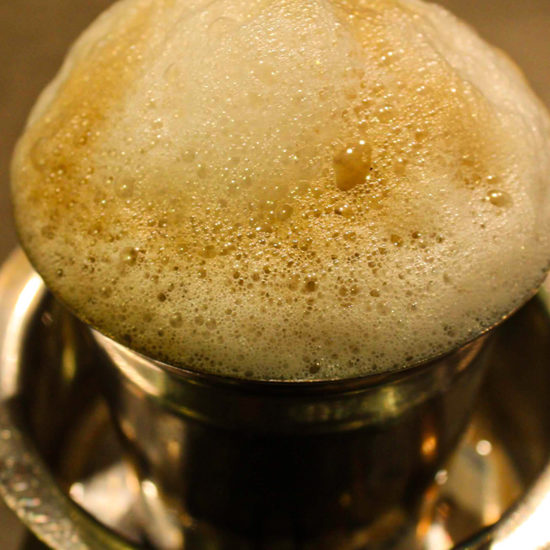

Guliyappa, also known as Paddu is a popular dish in South India, known by different names in different states. Paniyaram (Tamil name) and Ponganalu (Telugu name) are other popular names. Guliyappa makes an interesting breakfast item, particularly for kids because of its small size, ball-like shape and vegetable fillings. A pan is specifically available at small and medium sizes to pour the batter into. Preparation: Guliyappa is made by frying regular dosa batter in a special purpose pan. Chopped onions, vegetables are often added to the batter for enhanced taste. Guliyappa pan has multiple pits or cavities. When batter is poured into these spherical shape cavities and heated, ball shaped Guliyappa is formed. Guliyappa is often served with coconut chutney and vegetable sambar. Guliyappa is best consumed when it is still hot. A typical plate of Guliyappa consists of 4 to 6 small balls of Guliyappa, making it easy to share among friends. Also try: Restaurants serving Guliyappa may also be serving Set dose, Neer dose, Mysuru Masala Dose for breakfast. Do not forget to try these delicious breakfast dishes as well. Where to try Guliyappa: Guliyappa is commonly available in Coastal Karnataka restaurants, during breakfast time. Restaurants in Bengaluru serving Tamil Nadu, Andhra or Coastal Karnataka style food also often serve Guliyappa.
Haalbai
Haalbai is a unique sweet from Karnataka. Haalbai is a sweet cake derived from fat grained rice used to make idli/dosa. Haalbai is made in several households as a festival sweet or to celebrate special events.
How is Haalbai made:
Idli/dosa rice is soaked for a few hours to soften, then ground thoroughly to get batter. This rice batter is mixed with coconut milk and then added to a hot pan containing ghee and jaggery. Upon heating the batter mix thickens to form a cake. Add-ons like cardamom, elaichi may be added at this stage. Additional ghee or coconut milk added as felt necessary. Once heating is complete, the mixture is transferred to a larger plate, spread evenly and cut into cubes for serving. A piece of cashew or almond may be inserted on top of haalbai for visual effect and added taste.
Since jaggery used in Haalbai is made from natural sugars, Haalbai is safe for consumption by even those who have high sugar levels.
Where to get Haalbai:
Haalbai has a relatively shorter shelf life because of the usage of coconut milk. Hence it may not be stocked in restaurants or bakeries and is often made to order. You may take help from your local host to help locate a store where Haalbai may be available or made to order.
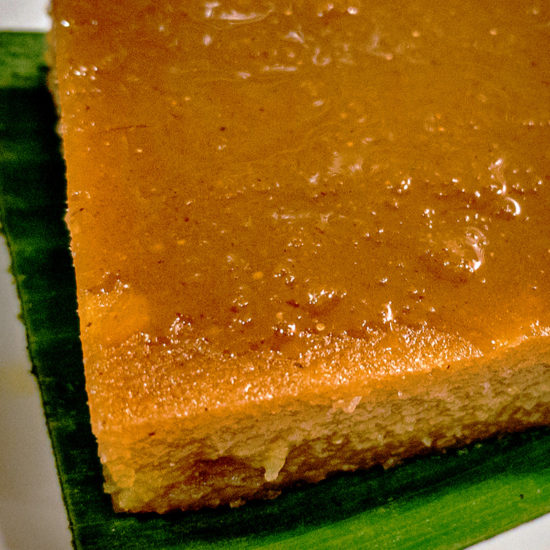
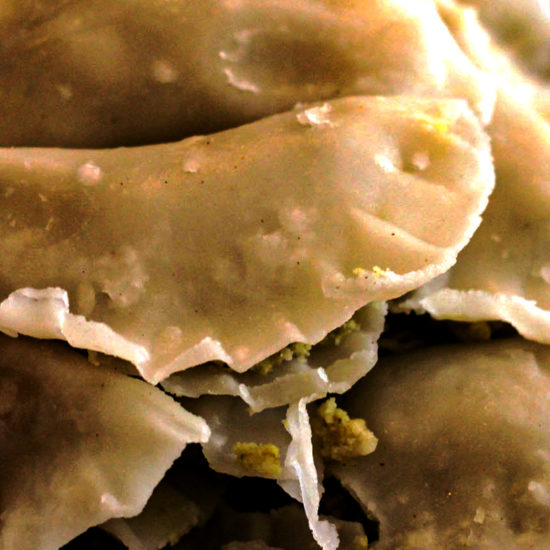
Kadubu is a popular breakfast dish in Karnataka. Kadubu is essentially an Idli (rice cake) in an interesting shape, cooked in cups made of jackfruit leaves. How is Kadubu made? Idli rice and urad dal are soaked in water for several hours. Once they get soft, the rice and dal is ground till they form smooth batter. This batter is left overnight to ferment. Fermented batter almost doubles in volume with lots of air bubbles. Next day, salt is added and batter is poured into specially made cubical cups (made by stitching jackfruit leaves together) or cylindrical cups made by rolling palm leaves. In the event of unavailability of leaves, stainless steel cups are used. The batter in its cup is steam cooked for 10-15 minutes and Kadubu will be ready. This unique shape and aroma of leaves give Kadubu its uniqueness, compared to a more common form of the same batter, the Idli. Serving one single piece of Kadubu is usually equivalent to having three to four Idlis. Served with: Kadubu is often served with coconut chutney and spicy sambar. A cup of filter coffee is also a great combination while enjoying Kadubu. Where to find Kadubu: Kadubu is commonly sold in restaurants of Coastal Karnataka and Malenadu (Western Ghats region). Several upscale restaurants in Bengaluru also serve Kadubu. You may use food delivery apps to locate the restaurant nearest to you serving Kadubu.
Majjige (buttermilk)
Majjige (buttermilk) is a refreshing drink you must try when in Karnataka. Majjige is derived from curd and spiced up with salt and green chili. It is a sought after natural drink after a day out in the hot sun. It keeps your body cool and is a better preferred, healthier drink to other canned and bottled cold drinks.
How is Majjige made:
Curd is the main ingredient behind majjige. Curd is diluted with water, spiced up with pieces of green chili, salt is added to taste and coriander leaves are added for aroma. This mix of curd, water, chili, salt and coriander leaves is mixed thoroughly, usually in a mixer grinder or using a hand operated stirrer to make tasty butter milk. Ice could be added for additional cooling.
Masala Majjige: Masala Majjige is a stronger variant of majjige spiced up with more ingredients such as cardamom, ginger or pepper.
Majjige helps in digestion besides cooling your body down. A glass of refreshing majjige is highly recommended after a lavish meal.
Where to find buttermilk:
Buttermilk is readily available in most restaurants in Karnataka. It is a very affordable drink and highly refreshing. Factory made buttermilk is also sold in small pouches in bakeries, supermarkets and milk booths. In summer months, several roadside vendors can also be seen selling majjige to motorists, construction workers and regular passerby.
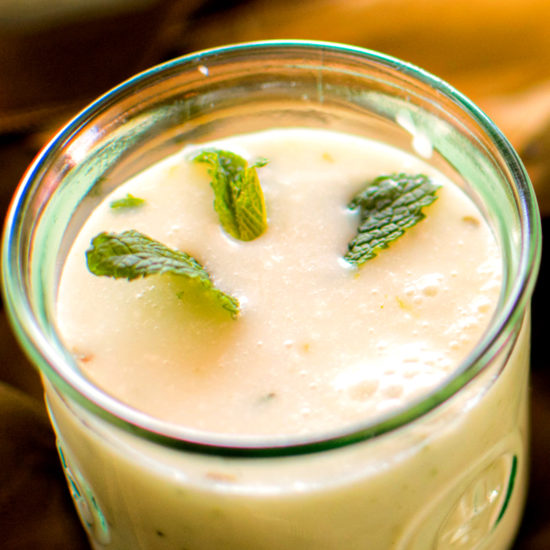
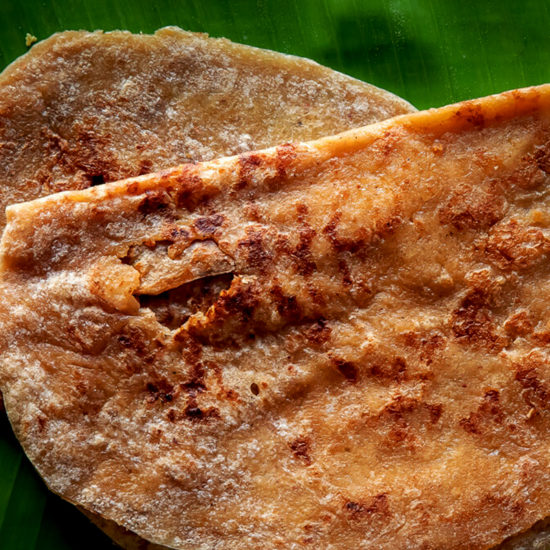
Obbattu, also referred to as Holige, is a sweet dish of Karnataka made during festivals and special events. How is Obbattu made: Making Obbattu is a relatively complex process compared to other Karnataka cuisines. Maida flour is the primary ingredient in Obbattu. Maida is mixed with small portions of wheat flour, salt, haldi (turmeric) and the dough is prepared. Meanwhile, chana gram is cooked in a pressure cooker. The dough base is then applied with chana-jaggery mix on the inside and heated on a tawa to make the delicious obbattu. Ghee is added while heating is in progress. Variations:
- Plain Obbattu: Obbattu without any stuffing
- Kai Obbattu: Kai refers to coconut. Holige made with coconut fillings is often a tastier version of regular obbattu but has much lesser shelf life due to usage of coconut. Most popular variant.
- Fruits/Vegetable Obbattu: Different variations of Obbattu are made by stuffing fruits/vegetables/ingredients like carrots, mango puree, pineapple, badam, chocolate, dry fruits and so on. These are not common and depend on the interest of the maker/shopkeeper.
Payasa
Payasa is a dessert item often served at the end of a lavish meal, or had as a sweet during festivals and celebrations. Despite full meals, no one can ever refuse a cup of tasty payasa.
Types of Payasa:
There are multiple types of Payasa popular in Karnataka. Payasa is named after its main ingredient such as Sabakki (Sago), Shavige (Semiya), Rice, Badam, Fruits such as mango, moong dal and carrot.
How is Payasa made?
Besides the primary ingredient (such as Sago/Semiya etc), milk, sugar/jaggery, toppings such as cashew and grape are main ingredients of payasa. The main ingredient like Semiya (vermicelli) is fried for a few minutes and then introduced to a bowl of hot milk, added with sugar. The mix is stirred continuously to let vermicelli absorb the essence of milk and sugar. The cooking process varies slightly depending on the main ingredient. Fruit based payasa may not involve any cooking and is often prepared by mixing fruit extract with milk and sweetners. Taste enhancers such as cardamom, cashew, dry grapes etc are added in generous quantities to payasa.
Where to find Payasa:
Payasa is often one of the items in any premium plate meals or buffet meals in most restaurants. Most restaurants allow Payasa to be ordered separately as well. Payasam can also be prepared at home in easy steps if you have kitchen access.
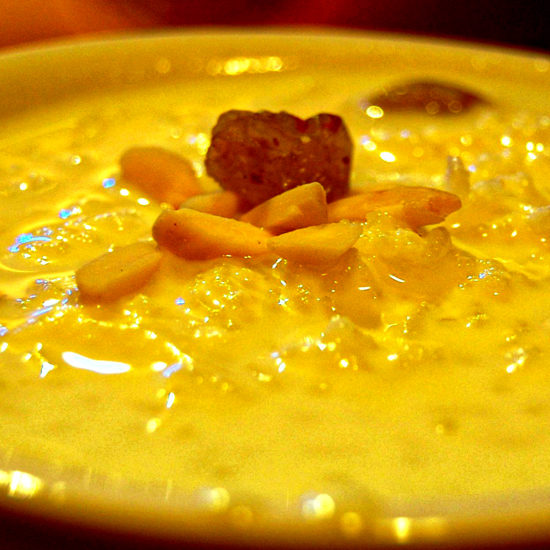
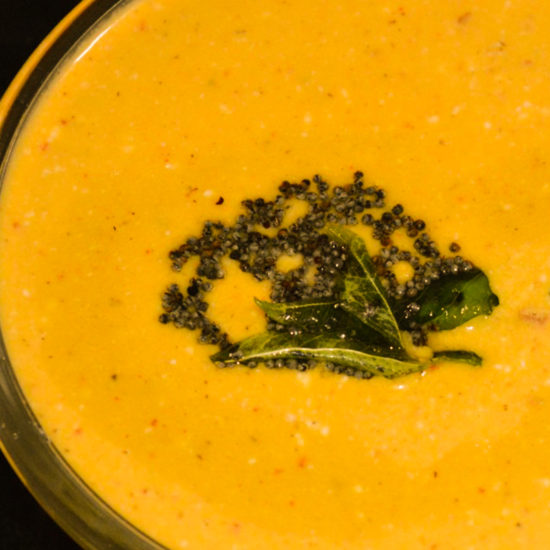
Tambuli is a soothing, healthy curd based side dish in Karnataka. Tambuli is often served with rice before having sambar or rasam. Types of Tambuli: Tambuli can be made from several core ingredients, such as Uruga (Centella asiatica, commonly known as Indian pennywort), Doddapatre (Borage leaves), Garlic, Ginger, Menthe (Fenugreek seeds) etc. How Tambuli is made: While the exact process varies slightly depending on the core ingredient, Tambuli is generally made by warming the main ingredient, such as Indian Pennywort/Borage leaves in ghee, making a paste of it using a mixer grinder, along with add-ons like green/red chili/pepper & jeera. Salt, coconut are added to taste. This fine grind paste is mixed gently with a bowl of curd. Tambuli is now ready to serve. Final touch of a ‘Oggarane’ or a cup of fried oil-red chili, mustard mix is added on top for ultimate aroma and taste. Served with: Tambuli is best consumed mixing it with rice. Most households and festival meals serve tambuli in small quantities as an appetizer before moving on to main dishes such as rasam or sambar. Tambuli is believed to have medicinal/healing properties as it is made from leaves or ingredients which are natural and medicinal. Where to find Tambuli: Tambuli is often not sold commercially. Some restaurants serve a cup of tambuli as a part of their plate meals.
Vangi Bath (brinjal rice)
Vangi Bath (brinjal rice) is a unique dish of Karnataka, offering the essence of fried Brinjal with rice.
Preparation: To make Vangi bath, brinjal (egg plant) is treated with spices and cooked directly on the flame in barbeque style, or on charcoal. Subsequently it is chopped into smaller pieces, mixed with vangi bath powder. Vangi bath powder is made by grinding several ingredients such as chillies, coriander, cloves, urad dal, cinnamon, coconut gratings etc. Ready to use vangi bath mix can be purchased from stores. As a final step, brinjal pieces with vangi bath mix are added to pre-cooked white rice. After thorough mixing and warming, Vangi Bath is ready to serve. Peanuts and cashew can be added for additional taste.
Served with: Vangi bath is often served with Raitha (mix of curd and vegetables such as onions, cucumber or tomato)
Also try: Other similar rice based dishes to try in Karnataka include Bisi bele bath (sambar rice), Chitranna (Lemon Rice), Curd Rice, Puliyogare and Tomato Rice.
Where to get Vangi Bath:
Puliyogare is commonly available in most darshinis (self help eateries) and restaurants in Bengaluru and other parts of Karnataka. Vangi Bath mix is readily available in supermarkets and grocery stores, using which it is possible to prepare Vangi Bath on our own if one has access to kitchen facilities and can cook rice.
